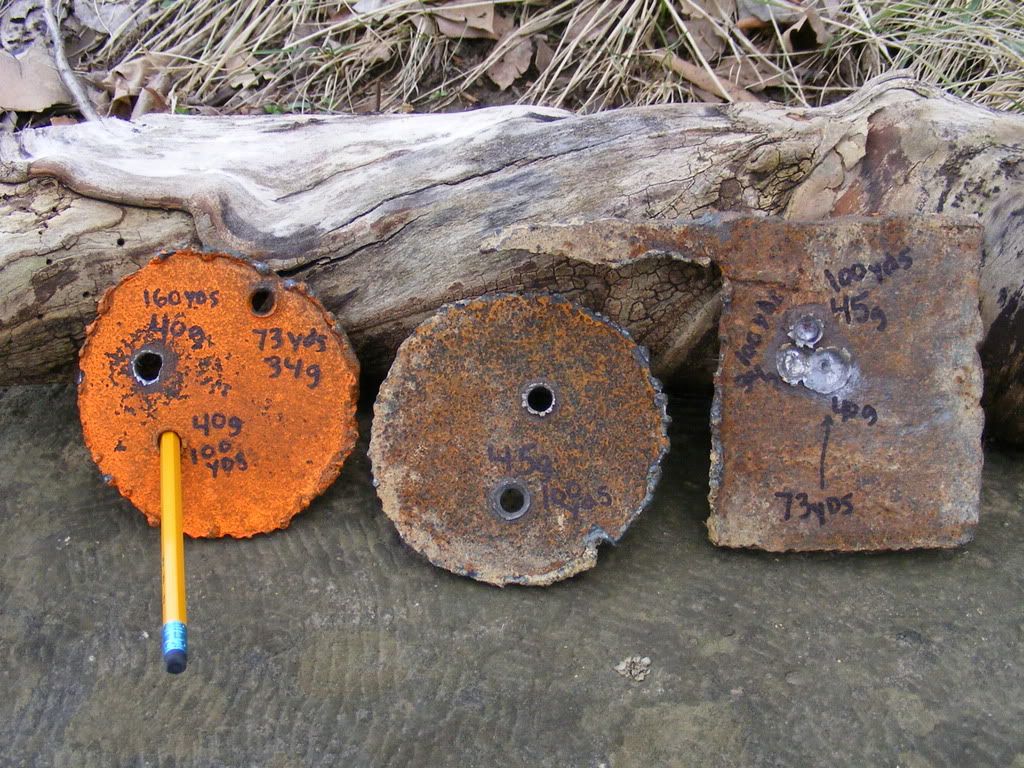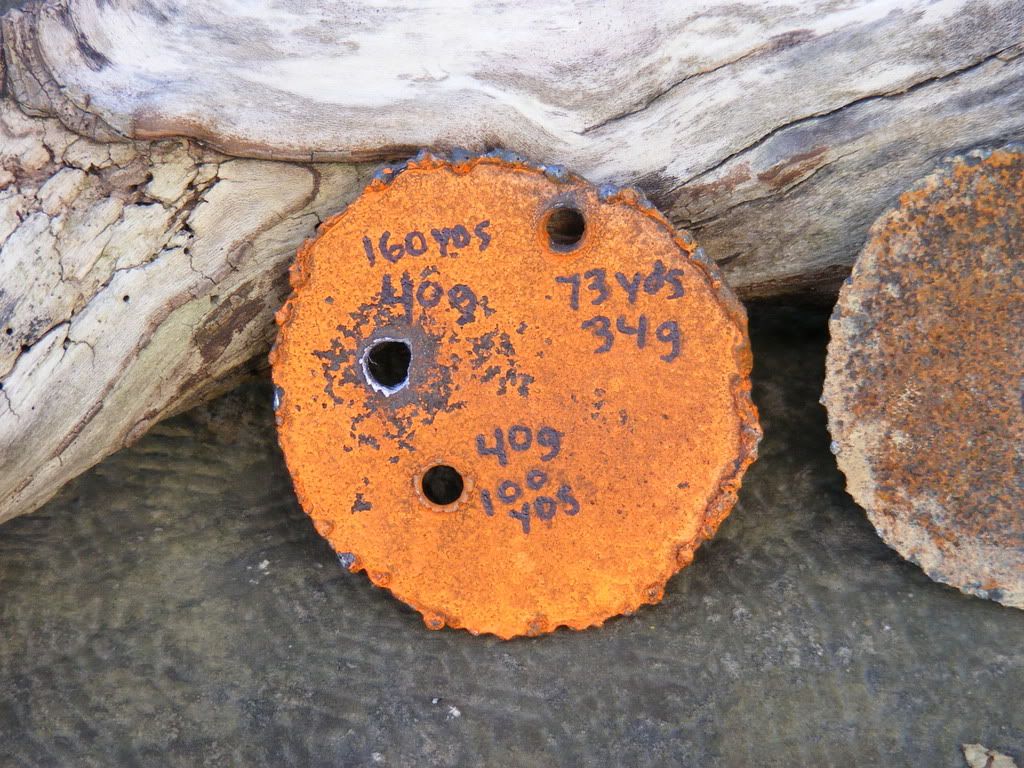Page 1 of 1
How'd that happen?. . . . .
Posted: Tue Feb 19, 2008 3:33 pm
by sniper model 12
Just when I thought I knew it all and had it all figured out. . . . Let me set the scene:
100 yds, 5-10mph diagonal cross wind, 43 degrees F, 3/16th inch thick plate of steel.
same conditions with a 1/2 inch thick plate of steel.


Last night I shot a stray cat with the 40g poly tip. 20 yds. NO EXIT WOUND OR VISIBLE ENTRANCE WOUND!

So.. . I find it interesting that the round can penetrate steel yet not exit a kitty. Once again, I am amazed at the calibre called the .204! Kudos to the wildcatters



sniper12
Re: How'd that happen?. . . . .
Posted: Wed Feb 20, 2008 5:43 am
by sniper model 12
The 1/2 inch steel plate did not get completely perferated. The 45gr SP left a thin skin on the back side of the plate. the 40g Vmax left a good splat with a fair amount of penetration. . . even the plastic tip left a significant indentation. The 34g JHP left an note worthy impression in that hard chunck of metal!!
All shots were factory loads with stock Savage mod 12.
I even went as far as to set up a 3/16" plate with a second plate 6" behind it. When the 40g penetrated the first plate, it of course fragged sending the largest chuncks through the second plate.
Re: How'd that happen?. . . . .
Posted: Wed Feb 20, 2008 7:15 am
by Rick in Oregon
sniper: The difference between the cat and the steel can be best described as hydraulic or hydrostatic action in the cat, and pure kinetic energy displacement at a single point on the steel.
With the cat, the bullet expends it's engergy in a hydraulic medium in all directions. Pascals Law states that in a liquid enviromnent, all pressure imparted is spread equally in all directions (you cannot compress water). With the steel, the entire energy displacement and momentum is centered/massed on one point, and the full energy potential is used to push directly through the steel, causing complete penetration.
Just another example of just how powerful a varmint caliber really is, and a very good example at that.
On a side note: When during the war I was witness to what the .50 BMG round would do to various materials, including mild steel and armor, it was the biggest wake-up call I've had in this regard, as I'd been around rifles my entire life right up to that time. Your demonstration above would be good to show young shooters to illustrate the pure power of a rifle......three words come to mind immediately: power, respect, and safety.....

Re: How'd that happen?. . . . .
Posted: Thu Feb 21, 2008 5:44 am
by sniper model 12
rick: When shooting golf balls, I noticed that there was no penetration. . . . just a point of impact (POI). As I understand it, a golf ball is designed to transfer nrg from the club to the ball. The amount of nrg applied is reflected in the distance the ball travels. However, when a high velocity and high nrg bullet strikes the golf ball, the nrg transfer is higher than design capacity of the golf ball and the weakest area closest to the POI explodes. The farthest distance I've had a ball travel is 30 yds forward (ball placed 100yds against a cinder block) or 60 yds backward. I need to add that the cinder block broke into several chunks ($10 out the window)
I've tried different types of golf balls to find some variation in the nrg transfer. I've yet to shoot the gel filled balls, but so far each type of golf egg shows the same. . or very similar. . nrg travel pattern thru the ball. I'll post some pics tomorrow if I get the chance.
I had forgotten about Pascal and water displacement. The other thing. . . no bullet fragments were recovered. From steel or golf eggs. Thanks Rick ! !


 So.. . I find it interesting that the round can penetrate steel yet not exit a kitty. Once again, I am amazed at the calibre called the .204! Kudos to the wildcatters
So.. . I find it interesting that the round can penetrate steel yet not exit a kitty. Once again, I am amazed at the calibre called the .204! Kudos to the wildcatters 



